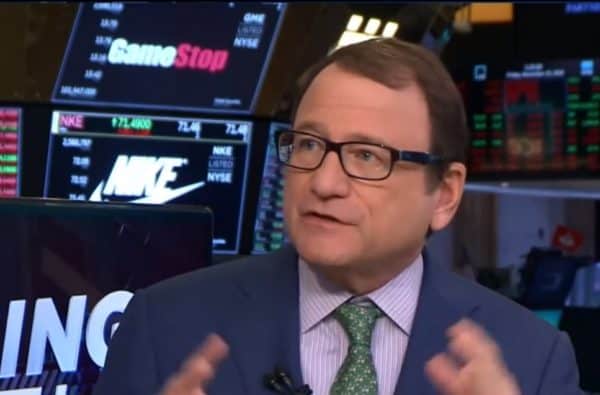Bricks and mortar margins are getting crushed by Amazon, former Bay CEO says

 Black Friday sales in the US are expected to be the largest yet, in part thanks to the growth in online purchases by customers just as happy to shop from home than face the crowds. But the numbers show that companies like Walmart and Target are going to have to work harder for their e-commerce dollars, as the profit margins are slimmer than through bricks and mortar sales, says Jerry Storch, past CEO Hudson’s Bay, who thinks online sales are off to a “spectacular” start to kick off the holiday shopping season.
Black Friday sales in the US are expected to be the largest yet, in part thanks to the growth in online purchases by customers just as happy to shop from home than face the crowds. But the numbers show that companies like Walmart and Target are going to have to work harder for their e-commerce dollars, as the profit margins are slimmer than through bricks and mortar sales, says Jerry Storch, past CEO Hudson’s Bay, who thinks online sales are off to a “spectacular” start to kick off the holiday shopping season.
“We’re seeing that the bricks and mortar stores are doing okay in the stores as well as growing very rapidly online,” says Storch, CEO of Storch Advisors, in conversation with CNBC. “But it hasn’t been sales that have been holding retailers back in terms of their stock prices; it’s been concern about the future —will next year have a recession, plus some amorphous concern about tariffs and how that will impact retailers.”
“The third topic -and this is real— is that margins are being compressed by the shift of their sales from bricks and mortar to the Internet, because just like Amazon doesn’t make a whole lot of money selling products that are delivered to your home, neither does Target, Walmart or anyone else.”
Both Target and Walmart (NYSE:WMT) released their third-quarter financials recently. Target posted higher than expected revenue but missed analysts’ estimate on earnings per share at $1.09 per share versus the expected $1.12 per share, with management chalking the weaker profit margins to rising costs associated with wage increases and same-day delivery services. (All figures in US dollars.)
In Walmart’s case, comparable sales rose for the 16th consecutive quarter, racking up revenues of $124.89 billion versus the expected $125.55 billion, while its profits surprised at $1.08 per share versus the expected $1.01 per share. Both WMT and TGT fell in trading subsequent to their quarterly releases.
“In the case of Target, when we saw their results come out a few days ago, their margins really got crushed, and they didn’t make up for it in improvements in SG&A,” says Storch. “Walmart did see margin compression but the also improved their cost structure to handle it and so their overall bottom line margin stayed the same year-over-year. That’s going to be the challenge as we look to the future, not how to grow sales but how to make money doing it.”
As far as the e-commerce market share goes, Amazon still reigns supreme, holding down almost half of all US online sales, while Walmart and Target each own less than five per cent of the market.

